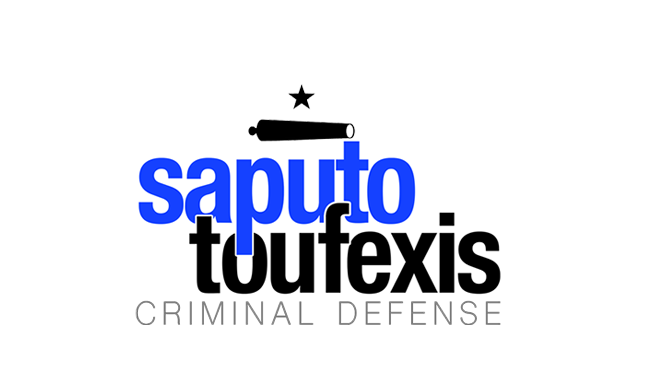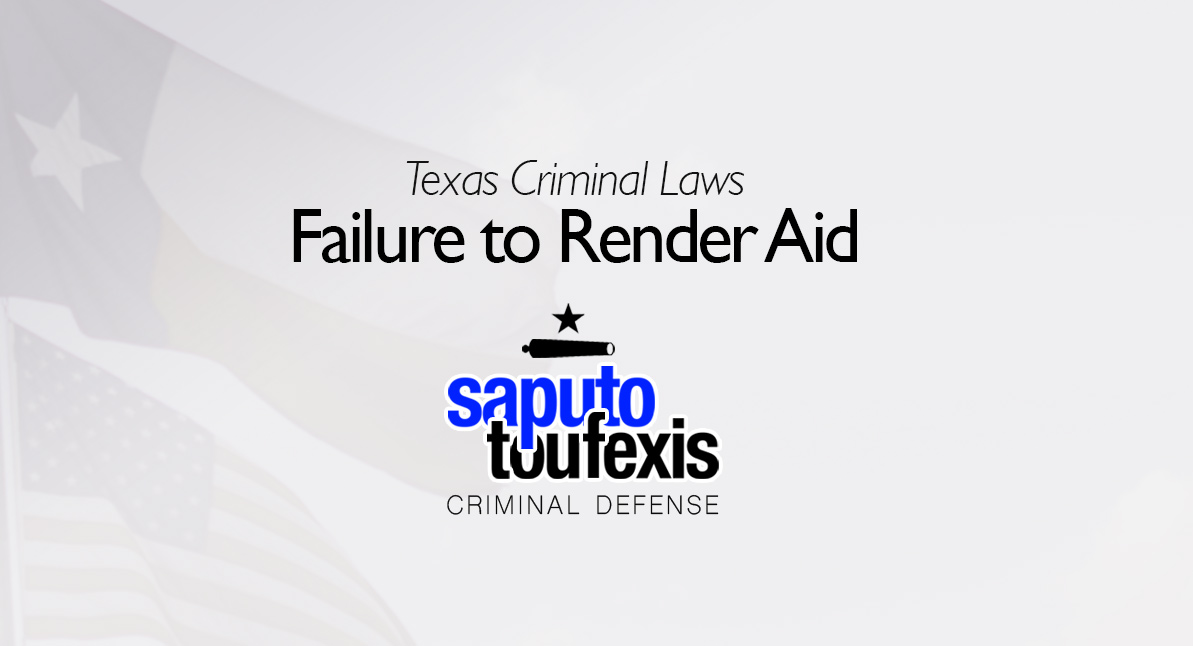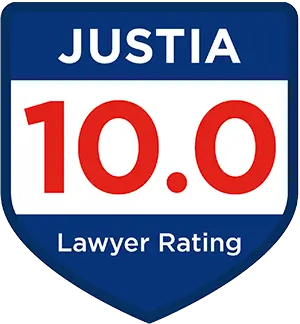TheTexas Failure to Stop and Render Aid law (abbreviated FSRA) also known as Leaving the Scene of an collision requires operators of vehicles to stop at the scene of collisions in which they are involved and perform certain tasks.
FAILURE TO STOP AND RENDER AID: ATTORNEY FAQs
- What do you have to do when an collision results in personal injury or death?
- What do you have to do when an collision results in damage to a vehicle only?
- What information do I need to give at the scene of an collision?
- What does the law require after striking an unattended vehicle?
- What does the law require after striking a structure or fixture on the highway?
- What is the punishment for Failure to Stop and Render Aid?
The Texas legislature codified the Failure to Stop and Render Aid / Leaving the Scene of an Accident law in the Texas Transportation Code Chapter 550. Transportation Code Section 550.021 describes the rules for what you are supposed to do when an collision results in personal injury or death. Transportation Code Section 550.022 describes the rules for what you are supposed to do when an collision results in only damage to a vehicle and no personal injury. Transportation Code Section 550.023 describes the information you need to give in both of those circumstances. Transportation Code Section 550.024 describes the rules for what you are supposed to do if you strike an unattended vehicle. And Transportation Code Section 550.025 describes the rules for what you are supposed to do when you strike a structure, fixture or highway landscaping.
The Transportation Code classifies the Failure to Stop and Render Aid law under Title 7 “Vehicles and Traffic,” Chapter 550 “Collisions and Collision Reports.” The law was updated in 2023 by replacing the word “accident” with the word “collision” throughout the statute.
Learn more detailed information about the Failure to Stop and Render Aid offense below.
Have you been charged with Failure to Render Aid or Leaving the Scene of an Accident? Book a consultation to discuss legal representation with attorneys Paul Saputo and Nicholas Toufexis today.
or Text or Call (888) 239-9305
What do you have to do when an collision results in personal injury or death?
The Texas Transportation Code describes four duties for the operator of a vehicle involved in an collision that results or is reasonably likely to result in injury to or death of a person:[1]
(1) immediately stop the vehicle at the scene of the collision or as close to the scene as possible;
(2) immediately return to the scene of the collision if the vehicle is not stopped at the scene of the collision;
(3) immediately determine whether a person is involved in the collision, and if a person is involved in the collision, whether that person requires aid; and
(4) remain at the scene of the collision until the operator complies with the requirements of Section 550.023.
If you fail to do any of these, it is a violation of the law.
What do you have to do when an collision results in damage to a vehicle only?
Texas law provides three duties for the operator of a vehicle involved in an collision that results in damage to a vehicle, if the other vehicle is attended:[2]
(1) immediately stop the vehicle at the scene of the collision or as close as possible to the scene of the collision without obstructing traffic more than is necessary;
(2) immediately return to the scene of the collision if the vehicle is not stopped at the scene of the collision; and
(3) remain at the scene of the collision until the operator complies with the requirements of Section 550.023.
If an collision occurs on a main lane, ramp, shoulder, median, or adjacent area of a freeway in a metropolitan area and each vehicle involved can be normally and safely driven: “each operator shall move the operator’s vehicle as soon as possible to a designated collision investigation site, if available, a location on the frontage road, the nearest suitable cross street, or other suitable location to complete the requirements of Section 550.023 and minimize interference with freeway traffic.”[3]
What information do I need to give at the scene of an collision?
After an collision involving personal injury, death or damage to an attended vehicle, the operator is required to give “the operator’s name and address, the registration number of the vehicle the operator was driving, and the name of the operator’s motor vehicle liability insurer to any person injured or the operator or occupant of or person attending a vehicle involved in the collision; (2) if requested and available, show the operator’s driver’s license to a person described by Subdivision (1); and (3) provide any person injured in the collision reasonable assistance, including transporting or making arrangements for transporting the person to a physician or hospital for medical treatment if it is apparent that treatment is necessary, or if the injured person requests the transportation.”[4]
What does the law require after striking an unattended vehicle?
If you hit an unattended vehicle, Texas law requires the the operator of the vehicle to:[5]
(a) The operator of a vehicle that collides with and damages an unattended vehicle shall immediately stop and:
(1) locate the operator or owner of the unattended vehicle and give that person the name and address of the operator and the owner of the vehicle that struck the unattended vehicle; or
(2) leave in a conspicuous place in, or securely attach in a plainly visible way to, the unattended vehicle a written notice giving the name and address of the operator and the owner of the vehicle that struck the unattended vehicle and a statement of the circumstances of the collision.
What does the law require after striking a structure or fixture on the highway?
Texas law requires the operator of a vehicle that hits a structure, fixture or highway landscaping to do the following:[6]
(a) The operator of a vehicle involved in an collision resulting only in damage to a structure adjacent to a highway or a fixture or landscaping legally on or adjacent to a highway shall:
(1) take reasonable steps to locate and notify the owner or person in charge of the property of the collision and of the operator’s name and address and the registration number of the vehicle the operator was driving;
(2) if requested and available, show the operator’s driver’s license to the owner or person in charge of the property; and
(3) report the collision if required by Section 550.061.
What is the punishment for Failure to Stop and Render Aid?
A violation of Texas Transportation Code Section 550.021(a) is punishable as a second degree felony if the collision resulted in a death.[7] In addition, for Section 550.021(a) offenses where judges allow probation or community supervision, judges must order a mandatory minimum jail term of 120 days as a condition of probation.[8] If the collision resulted in serious bodily injury but not death, it is punishable as a third degree felony.[9]
All other violations of Section 550.021(a) are punishable by imprisonment in the Texas Department of Criminal Justice for not more than five years or confinement in the county jail for not more than one year, a fine not to exceed $5,000 or both the fine and the imprisonment.[10]
A violation of Texas Transportation Code Section 550.022(a) is punishable as a Class C misdemeanor if the damage to all vehicles is less than $200[11] or a Class B misdemeanor if the damage to all vehicles is $200 or more.[12] A violation of subsection (b) is a Class C misdemeanor.[13]
A violation of Texas Transportation Code Section 550.024(a) is a Class C misdemeanor if the damage to all vehicles involved is less than $200[14] or a Class B misdemeanor if the damage to all vehicles involved is $200 or more.[15]
A violation of Texas Transportation Code Section 550.025(a) is a Class C misdemeanor if the damage to all fixtures involved is less than $200[16] or a Class B misdemeanor if the damage to all fixtures involved is $200 or more.[17]
Legal References:
^1. Transportation Code Section 550.021(a)(1)-(4)^2. Transportation Code Section 550.022(a)(1)-(3)^3. Transportation Code Section 550.022(b)^4. Texas Transportation Code §550.023^5. Texas Transportation Code Section 550.024^6. Texas Transportation Code Section 550.025^7. Texas Transportation Code §550.021(c)(1)(A)^8. Texas Code of Criminal Procedure Art. 42A.516, as enacted by HB 2502, 86th Texas Legislature (RS), Section 1, and redesignated by HB 3607, 87th Texas Legislature (RS), Sec. 21.001(5)^9. Texas Transportation Code §550.021(c)(1)(B)^10. Texas Transportation Code §550.021(c)(2)^11. Texas Transportation Code §550.022(c)(1)^12 Texas Transportation Code §550.022(c)(2)^13. Texas Transportation Code §550.022(c-1)^14. Texas Transportation Code §550.024(b)(1)^15. Texas Transportation Code §550.024(b)(2)^16. Texas Transportation Code §550.025(b)(1)^17. Texas Transportation Code §550.025(b)(2)










